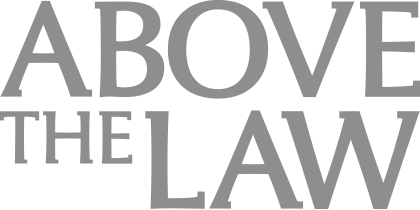The Power Of 'Why'
Stating what is obvious to yourself but may not be obvious to others can go a long way to building rapport.
 While it is unlikely a phenomenon unique to being in-house, I have recently learned the power of using “why” in communication. There are two particular use cases for “why” that I have personally found effective for work.
While it is unlikely a phenomenon unique to being in-house, I have recently learned the power of using “why” in communication. There are two particular use cases for “why” that I have personally found effective for work.
One — less revolutionary and probably well-known — purpose is asking clients “why” during meetings. It is in an attempt to try to get to the heart of what clients are trying to achieve through their ask, through their project, or through the position that they are trying to take. The intent is that once you know what clients are trying to achieve, the better you are able to get them there. If you’re curious, I have previously written about other helpful questions to ask as in-house counsel.
The other use case for “why” is explaining the reason why you’re communicating what you’re communicating. To some, this effort may even be considered overcommunicating and unnecessary. At the same time, I have found this strategy helpful to prevent miscommunication and to create a safe space for intellectual debate and objective problem-solving.
For example, if I’m asking some questions about a certain direction proposed, I may preface or interrupt my line of questioning by interjecting that I’m not necessarily disagreeing or “pushing back,” I just want to fully understand the facts or the reasoning. That way, my line of questioning is less likely to be misconstrued as having a contrary opinion when I may not actually have one. It signals to my team that I want to explore solutions — that I am still open and not tethered to an opinion yet. Hopefully, this also encourages the team to stay open-minded too.
If I’m investigating something that has occurred, and my line of questioning may be perceived as accusatory or questioning of someone’s credibility or judgment, I will actually state that it’s not my intent to “Monday-Morning Quarterback” — that I just need to understand what happened so I can best protect the company, and how, at the end of the day, it’s not about blame but process improvement and iterative growth. Hopefully, there’s sufficient trust and a strong enough relationship that my good intention is presumed, but if not, then stating what is obvious to me but may not be obvious to others as to why I’m asking questions in the first place can go a long way to building rapport and that psychological safety I’m seeking.
Last, but certainly not least, I find that starting a conversation with why I’m speaking can help prepare the listener and also lead to better results. For example, I may start a conversation with, “This is just an FYI only.” That way, my team knows that they just need to listen and that no requested action or follow up is required. Likewise, I may start a conversation with, “I’m sharing this because I want to know if you’ve encountered this before,” and my team will be able to listen and cognitively be prepared for a compare/contrast with their earlier experiences. But if I start a conversation with, “I want to bring this issue to your attention to get your thoughts,” then my team knows to listen for the purpose of collaborating on a creative solution.
Although taking the time to communicate the “why” behind your communication can take extra time and intention, I have personally found that it can prevent some frustration from miscommunication and lead to stronger relationships with your team and clients.
Sponsored

Legal Department Financial Management Tools Decrease Legal Spend

AI Presents Both Opportunities And Risks For Lawyers. Are You Prepared?

Curbing Client And Talent Loss With Productivity Tech

Generative AI at Work: Boosting e-Discovery Efficiency for Corporate Legal Teams
 Meyling “Mey” Ly Ortiz is in-house at Toyota Motor North America. Her passions include mentoring, championing belonging, and a personal blog: TheMeybe.com. At home, you can find her doing her best to be a “fun” mom to a toddler and preschooler and chasing her best self on her Peloton. You can follow her on LinkedIn (https://www.linkedin.com/in/meybe/). And you knew this was coming: her opinions are hers alone.
Meyling “Mey” Ly Ortiz is in-house at Toyota Motor North America. Her passions include mentoring, championing belonging, and a personal blog: TheMeybe.com. At home, you can find her doing her best to be a “fun” mom to a toddler and preschooler and chasing her best self on her Peloton. You can follow her on LinkedIn (https://www.linkedin.com/in/meybe/). And you knew this was coming: her opinions are hers alone.
Sponsored

Generative AI at Work: Boosting e-Discovery Efficiency for Corporate Legal Teams








